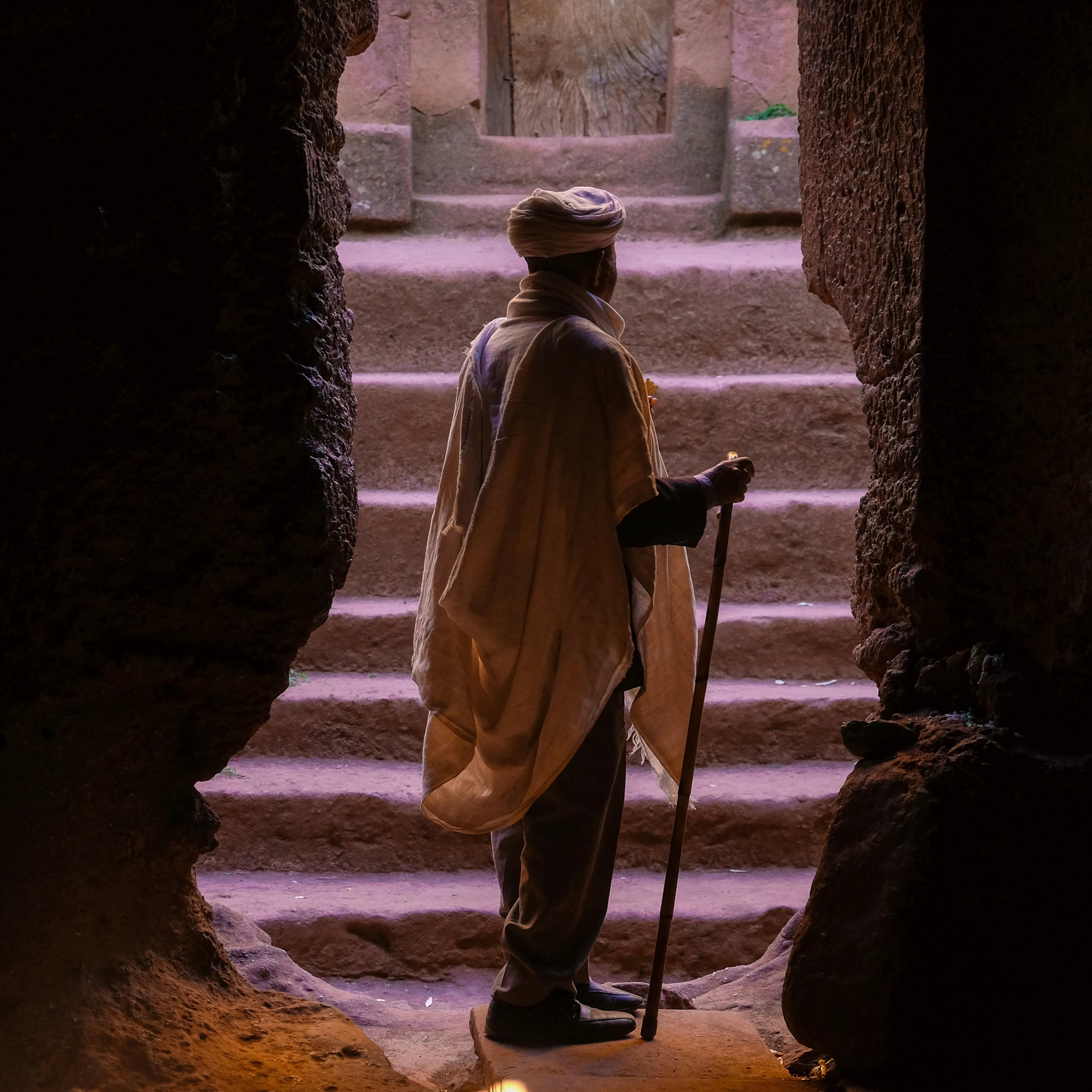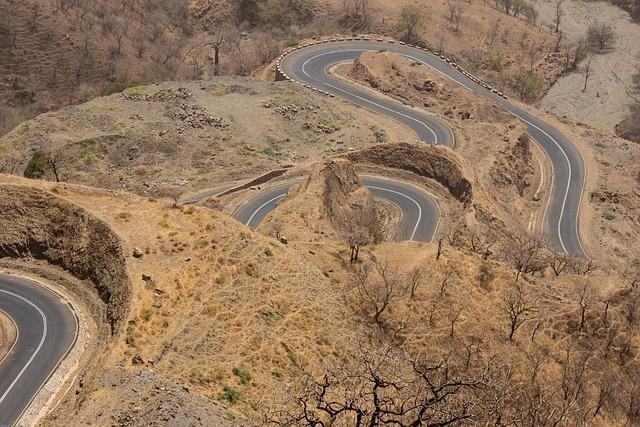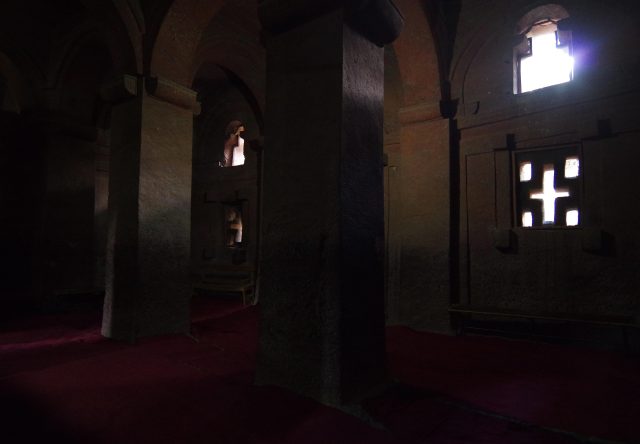Nestled within the rugged landscapes of Ethiopia, where the highlands kiss the sky and time seems to hold its breath, lies a tapestry of history carved into stone. The rock-hewn churches of Ethiopia are not just architectural marvels; they are timeless whispers of a civilization that fused art, spirituality, and resilience into its very bedrock. These ancient sanctuaries, chiselled directly from the earth, stand as a testament to human ingenuity and devotion, drawing pilgrims and historians alike into their shadowed alcoves. As we embark on a journey through these sacred sites, we delve into a past that is as enduring as the basalt from which these churches are carved, uncovering stories etched in stone and echoing through the ages. Join us as we explore the rich history of Ethiopia’s rock-hewn churches, where each chisel mark tells a tale of faith, culture, and an unyielding connection to the divine.
Ancient Marvels of Ethiopian Architecture
In the heart of Ethiopia, where the whispers of history echo through time, lie some of the most astounding feats of ancient architecture. The rock-hewn churches of Lalibela, often referred to as the “Eighth Wonder of the World,” are a testament to the extraordinary craftsmanship and religious devotion of a bygone era. Carved directly into the volcanic rock, these monolithic structures are not only places of worship but also an architectural marvel that showcases the ingenuity of Ethiopian builders. With intricate designs and detailed carvings, these churches were meticulously crafted to reflect the spiritual significance of their time.
- Bet Giyorgis: Renowned for its cross-shaped design, this church is perhaps the most iconic of Lalibela’s rock-hewn wonders.
- Bet Medhane Alem: Known as the largest monolithic church in the world, it mirrors the grandeur of an ancient Greek temple.
- Bet Maryam: With its beautiful frescoes and carvings, this church is dedicated to the Virgin Mary and offers a glimpse into the spiritual artistry of the period.
These structures, steeped in legend and mystery, offer a fascinating glimpse into Ethiopia’s rich history and cultural heritage. Each church, with its unique architectural style, not only serves as a place of spiritual solace but also as a symbol of the country’s historical significance and the enduring legacy of its ancient civilizations.

Unveiling the Mysteries Behind Lalibelas Sacred Stones
The rock-hewn churches of Lalibela stand as a testament to the extraordinary craftsmanship and spiritual devotion of 12th-century Ethiopian artisans. These remarkable structures are not merely carved from the earth; they are steeped in legend and religious significance. With each chisel mark, stories of divine inspiration and human dedication emerge, inviting visitors to ponder the mysteries hidden within their stone walls. Lalibela, often dubbed the “New Jerusalem,” is believed to have been constructed with celestial guidance, with local lore suggesting angels aided in the churches’ swift completion. This mystical aura is palpable as one walks through the intricate network of tunnels and passages, connecting the churches in a sacred labyrinth.
- Bet Giyorgis: Renowned for its striking cruciform shape, this church is arguably the most famous of Lalibela’s marvels.
- Bet Medhane Alem: This is the largest monolithic church in the world, showcasing a blend of artistic finesse and religious fervor.
- Bet Amanuel: Known for its elaborate carvings and unique architectural style, reflecting Aksumite influences.
These awe-inspiring edifices are more than just places of worship; they are an enduring symbol of Ethiopian identity and faith. As one delves deeper into the enigmatic beauty of these sacred stones, a profound appreciation for the cultural and historical tapestry of Ethiopia unfolds.

Preserving the Past: Conservation Efforts and Challenges
The ancient rock-hewn churches of Ethiopia, particularly those in Lalibela, stand as a testament to the ingenuity and spiritual dedication of their creators. These architectural marvels, carved directly into the mountainsides, have withstood the ravages of time but now face modern-day challenges. Conservation efforts are crucial to preserve these cultural treasures for future generations. Local and international organizations are working tirelessly to address the vulnerabilities posed by natural erosion, climate change, and human impact.
Conservation challenges faced by these historical sites include:
- Environmental Factors: Erosion and water damage threaten the structural integrity of the rock formations.
- Tourism Impact: While tourism brings much-needed revenue, it also poses risks of wear and tear on the delicate carvings.
- Limited Resources: Funding and expertise are often insufficient to implement comprehensive preservation strategies.
Efforts to preserve these sites are multifaceted, involving not only physical restoration but also community engagement and education. By raising awareness and fostering a sense of stewardship among locals and visitors alike, the hope is to sustain the delicate balance between cultural preservation and modern development.

Travel Tips for a Pilgrimage to Ethiopias Hidden Sanctuaries
Embarking on a pilgrimage to Ethiopia’s hidden sanctuaries is a journey into the heart of ancient spirituality and architectural marvels. To make the most of your experience, consider these essential travel tips:
- Research and Plan Ahead: Familiarize yourself with the history and significance of each site. Understanding the stories behind the rock-hewn churches will enrich your visit.
- Respect Local Customs: Dress modestly and adhere to the customs and traditions of the local communities. These sacred sites are places of worship and cultural heritage.
- Hire a Local Guide: A knowledgeable guide can provide invaluable insights and help navigate the complex terrain of these ancient sites.
- Prepare for the Terrain: Some churches are located in remote areas, requiring hiking and a good level of fitness. Wear sturdy footwear and carry essentials like water and snacks.
Concluding Remarks
As we conclude our journey through the ancient corridors of Ethiopia’s rock-hewn churches, we find ourselves not only in awe of their architectural brilliance but also deeply moved by the stories etched into their very foundations. These sacred sites, standing resilient through the sands of time, whisper tales of devotion, artistry, and cultural synthesis. They invite us to reflect on the enduring human spirit that carved sanctuaries out of stone, leaving behind a legacy that transcends generations. As we step away from these monumental marvels, we carry with us a profound appreciation for the rich tapestry of history that Ethiopia offers—a history that continues to inspire and captivate all who wander its storied landscapes.

































